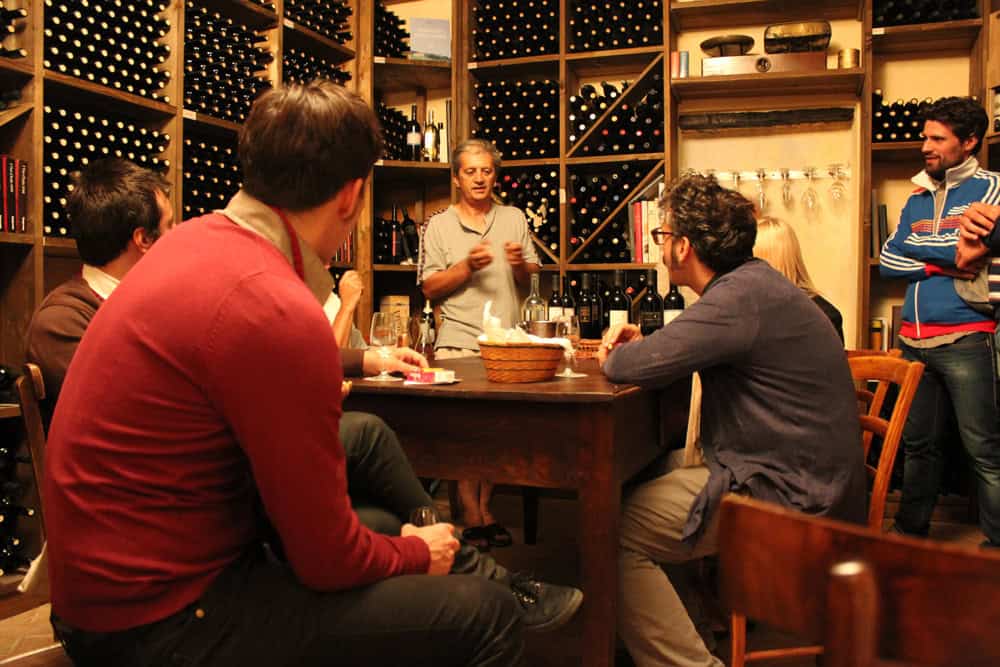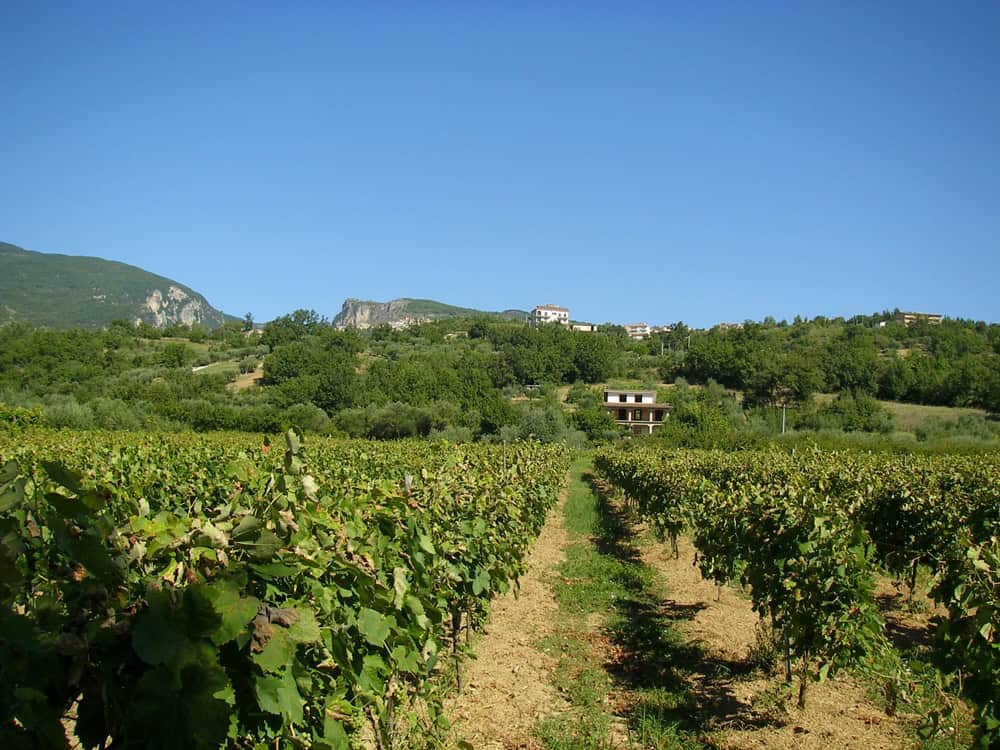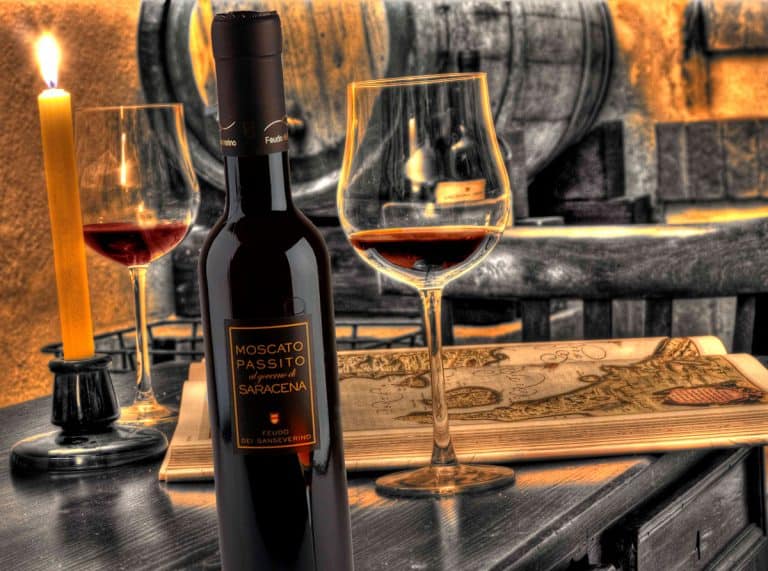Credit must be given to the Bisconte brothers for being the first to believe that Moscato di Saracena could undergo lengthy periods of maturation in the cellar before being bottled. The idea stemmed from the discovery of old bottles in their cellar, dating back to the 1960s and 1970s, which, despite their age and suboptimal storage conditions, still had something to offer. This discovery marked the start of a phase of study and numerous experiments: micro-vinifications from micro-productions (imagine the time, effort, and cost involved in micro-vinifications) exploring different aging and maturation techniques… not to mention the vineyard work required to determine the optimal harvest time for the various grape varieties used.

Roberto Bisconte in the tasting room of the winery
Moscato di Saracena: bottled after 8 years
The Bisconte brothers have also worked on what they call scottatura, which involves boiling a portion of the must, significantly reducing the time required. Of course, vintage always plays a role, but nowadays, the Biscontes' Moscato di Saracena typically spends two years on the lees in steel tanks, followed by at least another five or six years in twenty-year-old oak barrels, periodically refilled, before being bottled for a final year of aging in glass. The results, based on recent tastings, are truly extraordinary.

The ancient (and recent) history of Moscato di Saracena
The connection between Saracena and wine dates back centuries. According to Strabo, ancient Sestio was founded in 1744 BC by the Enotri people and flourished until 900 AD when it was conquered by the Saracens, giving it its modern name. The first records of Moscato di Saracena date back to the 16th century. However, phylloxera and rural depopulation later reduced this historic wine’s production to a family-scale level by the end of the last century. It wasn’t until the late 1990s that Moscato di Saracena began to regain attention, with a couple of small artisanal wineries restarting the bottling of this ancient wine with its intricate production method, ultimately gaining Slow Food Presidium status.
It’s worth noting that Moscato di Saracena isn’t made solely from Moscato grapes but also includes Malvasia, Guarnaccia, and Odoacra (or Duraca, a local term for Zibibbo). While the Moscato grapes are left to dry for two or three weeks, part of the must from Guarnaccia and Malvasia is simmered to concentrate it, typically reducing it by 30%. Finally, the Moscato grapes are gently pressed (historically by women pressing each grape with their fingers) and added to the must to initiate fermentation. The winery of Maurizio and Roberto Bisconte was founded in 1998 and now covers just five hectares of vineyard.

The Wine: Moscato, but not only
This *Moscato Passito al Governo di Saracena ’15* is a blend of Saracena Moscato, Malvasia, and Guarnaccia in nearly equal proportions, with a touch of Odoacra. On the nose, it reveals an extraordinary, complex bouquet—a kaleidoscope of citrus and ginger aromas, followed by candied yellow fruit, saffron, figs, honey, green tea, and spices. Sweet yet balanced by its savoury acidity, the sip is dense, velvety, and remarkably persistent.
Feudo dei Sanseverino - Saracena (CS) - feudodeisanseverino.it


 US tariffs: here are the Italian wines most at risk, from Pinot Grigio to Chianti Classico
US tariffs: here are the Italian wines most at risk, from Pinot Grigio to Chianti Classico "With U.S. tariffs, buffalo mozzarella will cost almost double. We're ruined." The outburst of an Italian chef in Miami
"With U.S. tariffs, buffalo mozzarella will cost almost double. We're ruined." The outburst of an Italian chef in Miami "With US tariffs, extremely high risk for Italian wine: strike deals with buyers immediately to absorb extra costs." UIV’s proposal
"With US tariffs, extremely high risk for Italian wine: strike deals with buyers immediately to absorb extra costs." UIV’s proposal Meloni: "Tariffs? If necessary, there will be consequences. Heavy impact on agri-food sector"
Meloni: "Tariffs? If necessary, there will be consequences. Heavy impact on agri-food sector" The Government honours the greats of Italian cuisine, from Bottura to Pepe. Massari: "Thank you, Meloni, the only one who listened to us"
The Government honours the greats of Italian cuisine, from Bottura to Pepe. Massari: "Thank you, Meloni, the only one who listened to us"






